Succulents are ideal for beginner-level plant hobbyists because they are easy to grow and care for. Whether you live in a tropical region that goes arid and dry or in a place where temperatures can drop below freezing, there is a variety of succulent plants to suit your environment.
Unlike other plant species, succulents don’t require regular attention. As long as your succulent gets its daily dose of the morning sun for 6 hours, you’ll be fine. And when it comes to watering, less is best.
You only water the soil in between dry periods. During the growing seasons of summer and spring, you might only give your succulent water every seven to 10 days. In the wintertime, soil holds moisture longer and might not require water for an entire month.
Don’t have an outdoor garden? No problem! You can grow succulents indoors as home decor or as ornaments. Hotels grow succulents in small ceramic pots and display these miniature beauties in different locations – including the restrooms.
That’s why the popularity of succulents has been booming over the last few years. They are perfect plants for beginners who want to become horticulturists but have a busy schedule or do a lot of traveling.
7 Best Succulents For Beginners
You don’t need a green thumb to find success growing succulents. To make it easier for you to start your new hobby, we’ve created this list of the 7 best succulents for beginners.
Now, let’s get growing!
1. Aloe Vera
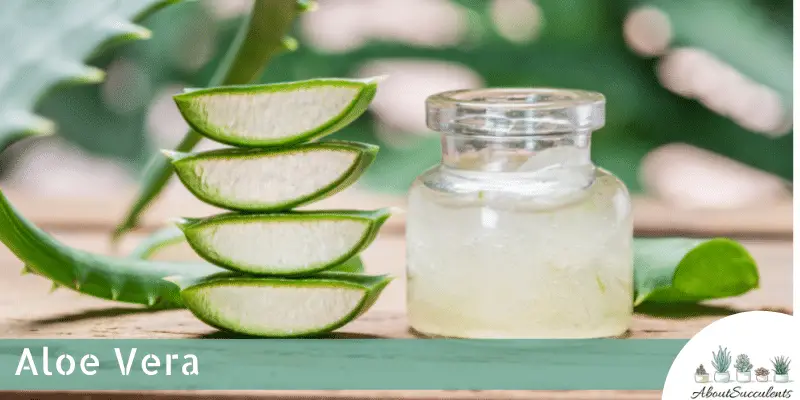
Aloe vera is on top of our list not because it starts with the letter “A”. The succulent plant which is native to Africa, the Middle East, and Madagascar is commonly found in many households because it has been studied to have medicinal benefits.
Also known as “Medicinal Aloe”, this popular succulent is commonly used to treat wounds and sunburn. Aloe vera is often part of an anti-aging regimen because the gel-type substance from its leaves is rich in antioxidants and improves skin hydration.
Aloe vera will do well under partial or direct sun exposure. Keep “Flower of the Desert” away from the afternoon sun as its harsh rays can burn the precious leaves.
Because Aloe vera originates in regions with dry and arid conditions, it can survive long periods without water. Only water the soil when it has dried out completely.
If you live in a region where temperatures fall below -6.7° C (20° F), it would be best to grow Aloe vera indoors because this isn’t a cold-hardy succulent. As a houseplant, keep Aloe vera in the kitchen or dining area and position its pot near a window that gets 4 to 6 hours of sunlight per day.
2. Crassula Ovata
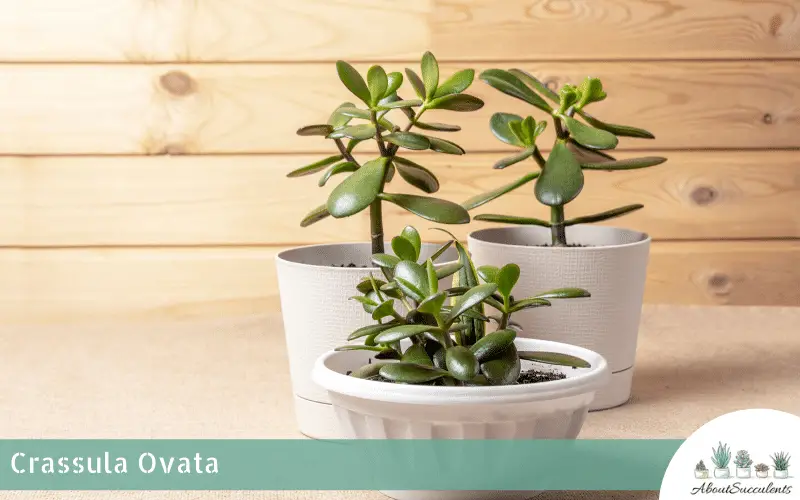
If you’re not familiar with Crassula ovata, perhaps its aliases “Money Tree” and “Jade Plant” will ring a bell.
Crassula ovata is easily identified by its dark, emerald-green leaves that associate the succulent plant with money. People who grow Jade Plant believe it will bring in good fortune in their homes or businesses.
Whether you’re superstitious or not, no one can argue that Crassula ovata is a beautiful succulent. Sometime during winter and spring, expect to be greeted by charming, small, pink-colored flowers that emit a subtle sweet scent.
As an outdoor plant, Money Tree is a welcome addition to a water display or a rock garden. The best location is in an area that gets up to 6 hours of direct morning sunlight.
If you prefer to grow Jade Plant indoors and believe the stories, position the succulent near the entrance to “welcome good fortune”. More importantly, make sure Crassula ovata is situated near a window that gets up to 6 hours of partial or direct sunlight.
Since Crassula ovata thrives under direct sunlight, a good option would be to place it under a Grow Light.
Water the soil sparingly. Similar to other succulents, only water in between dry periods.
3. Haworthia Fasciata
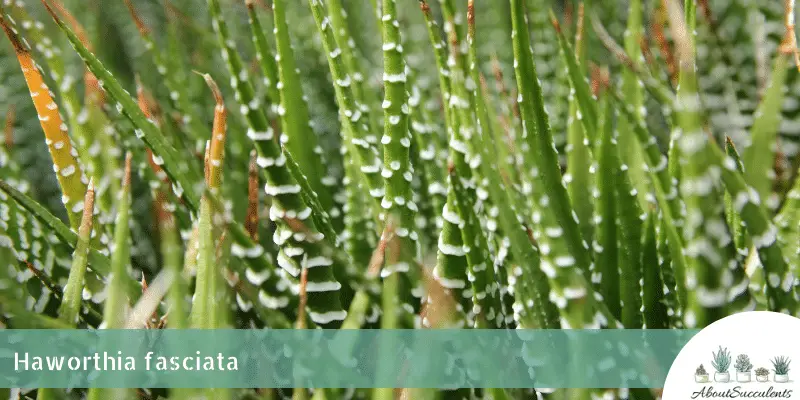
Haworthia fasciata checks all the boxes for a succulent plant that’s easy to grow and care for. “Zebra Plant”, as this succulent is more popularly known, is characterized by its thick, dark-green leaves that are accented by white stripes.
The thick leaves of Haworthia fasciata allow it to store water and survive extended periods of drought. You can go on a 2-week vacation and not worry if your Zebra Plant received water.
When exposed to direct sunlight for 6 hours every day, Zebra Plant’s tips develop an attractive red color.
Haworthia fasciata can tolerate dry conditions but not frost. If the temperature in your area drops below -1.1° C (30° F), move Zebra Plant indoors. Keep in mind that when grown as a houseplant, Haworthia fasciata might not bloom in the summertime. Its flowers are small, pink, and have a tubular shape.
4. Burro’s Tail ( Sedum Morganianum )
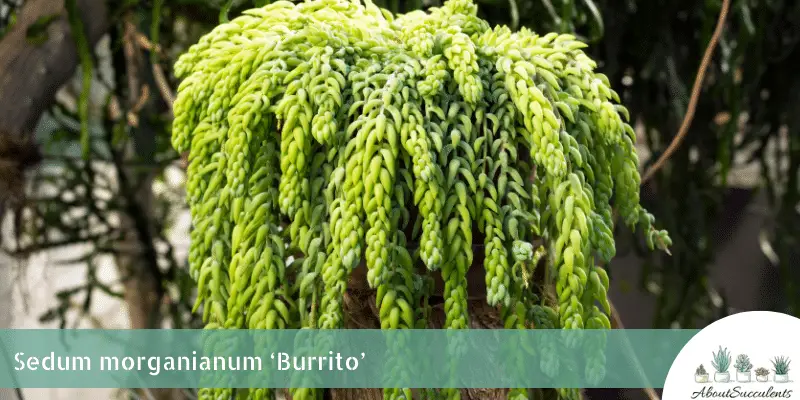
Burro’s Tail got its name from its long, trailing, green-colored leaves that are fleshy and shaped like a teardrop. Its scientific name is Sedum morganianum and many succulent hobbyists grow it in hanging baskets to showcase the trailing leaves that give the illusion of a green waterfall.
Sedum morganianum is a good starting point for beginners. Just make sure you locate Burro’s Tail in an area that gets 6 hours of partial to full sunlight and to water the soil only when it has gone stone-dry.
What beginners should remember is that Burro’s Tail’s lovely long leaves are very delicate and can break off easily when improperly handled.
5. Echeveria Elegans
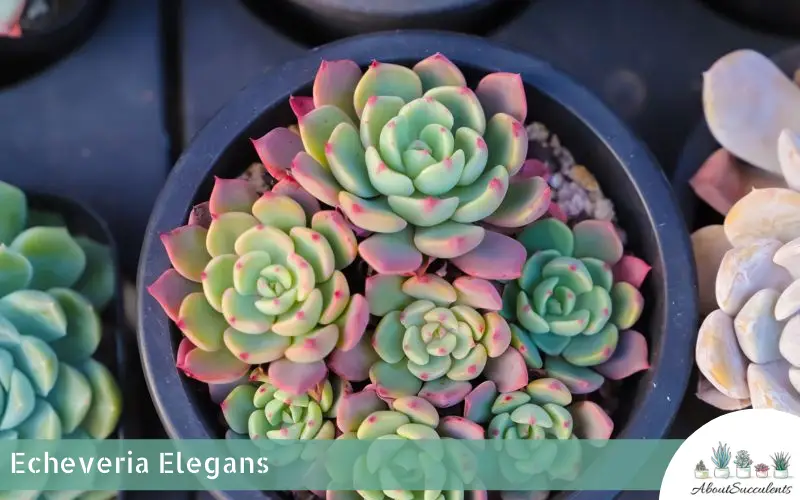
Echeverias are a species of succulents that originate from Mexico and are known to be tolerant to drought conditions. According to Mexican folklore, Echeveria elegans or “Mexican Snowball” has the power to drive away evil spirits from homes.
What’s certainly true is that plant lovers are attracted to Mexican Snowball’s flowers that bloom in the late winter to early summer months. The flowers vary in color from pink to red and have yellow tips.
Echeveria elegans is a no-fuss succulent. You only need to remember 2 things. Make sure Mexican Snowball receives up to 6 hours of direct or partial morning sunlight and water sparingly. Check the soil’s level of dryness before giving it water.
6. Sanseveria Trifasciata
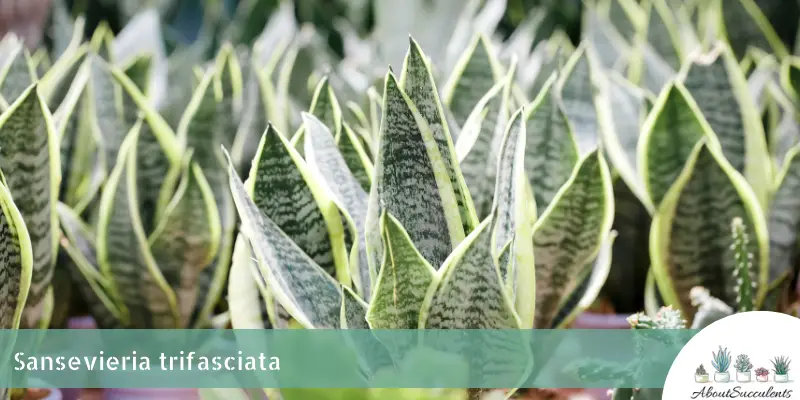
Do you live in a region that has winter? Sanseveria trifasciata is the perfect succulent for you to start off your hobby as a succulent grower. Commonly known as “Snake Plant” because of its long, twisting leaves that have yellow margins, it can survive frosty weather.
Aside from its mesmerizing appearance, Snake Plant also has another reported benefit. A study conducted by NASA showed that having this succulent inside your home can improve the quality of oxygen by removing toxic particles from the air.
Snake Plant grows better when exposed to partial sunlight for up to 6 hours every day. Likewise, this frost-tolerant succulent can endure drought conditions. For best results, water the soil every seven to 10 days or whenever the soil has gone dry.
7. Sempervivum Royanum
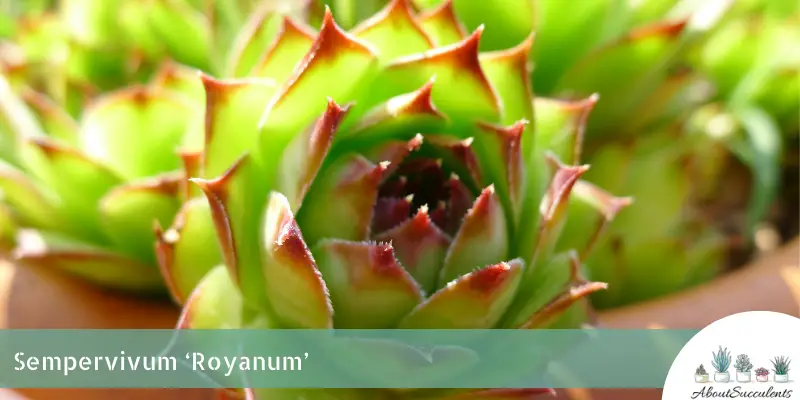
Similar to echeverias, sempervivums are a species of succulents that grow offsets or pups you can use for propagation. Having offsets is a wonderful gift because Sempervivum royanum is monocarpic and dies shortly after producing reddish-purple and star-shaped flowers.
Succulent plants that grow offsets are commonly referred to as “Hens and Chicks” or “Houseleeks”.
Hens and Chicks is an excellent succulent for beginners who reside in regions where the temperature can drop below -29° C (-20° F). It will do just fine even when blanketed by thick snow.
Morning or late afternoon sun is best for Sempervivum royanum. Make sure it gets at least 6 hours of partial or direct sunlight. Don’t water the soil when there’s still moisture.
Conclusion
If you’re looking to start a hobby growing things, you can’t go wrong with succulents. These plants are durable, low maintenance, and can last for years. The most common problem for beginners is overwatering their succulent plants.
When you water the soil frequently, the roots of the succulent are kept in a moist environment for a long time. The cells of the roots can rupture and expose the plant to fungal contamination.
The leaves and stems of the succulent store plenty of water. It’s a feature that allows these plants to survive extended periods of drought in the desert.
Just remember the simple rule for growing succulents: Sunlight every day but water sparingly.
Last Updated on December 19, 2022 by Sofia Lara